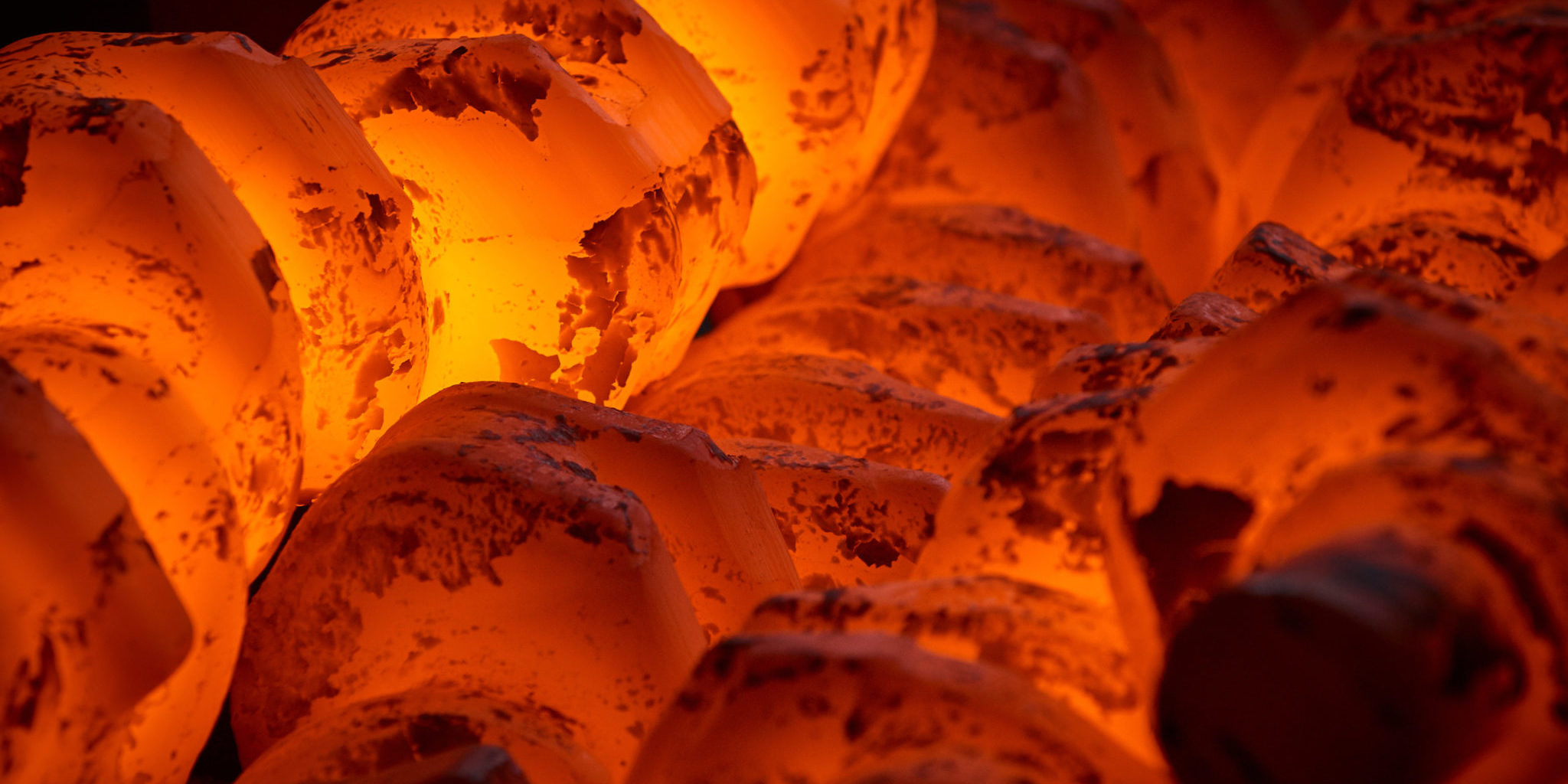OPEN-DIE FORGING VS. CLOSED-DIE FORGING

Forging University: Open Die Forging vs. Closed-Die Forging
The fourth topic in our 6-part discussion compares two popular types of forging: open-die vs. closed-die. Before continuing, take a quick look back to Lesson #1, Lesson #2, and Lesson #3 to review forging basics. You can also check out Anderson Shumaker’s Forging page.
What is Open-Die Forging?
Open-die forging (also known as free forging) is when a piece of metal is deformed between multiple dies that do not enclose the metal entirely. The dies hammer and stamp the metal through a series of movements to alter its dimensions until the desired shape is achieved. Open-die forging is our specialty at Anderson Shumaker.
What is Closed-Die Forging?
Closed-die forging (also called impression forging) uses pressure to force a metal piece to fill an enclosed die. Closed-die forging uses a medium frequency induction heating furnace to heat the metal to achieve the desired shapes. As the dies press together, the material is forced to fill the impressions, and the excess metal (flash) is squeezed out.
What are the Advantages and Disadvantages of Both?
Die forging is the best method to meet tolerances. It results in finished parts that are completely filled and produced with the least amount of flashing.
Open-die forging offers:
Excellent fatigue resistance and improved microstructure
Finer grain size and continuous grain flow
Increased strength (longer product life)
Reduced chance of voids in finished product
Less material waste (cost savings)
When open-die forging, machining is often required as a final step to achieve accuracy and desired finish. Luckily, Anderson Shumaker keeps machining and finishing in-house, saving our clients time and expense.
Closed-die forging offers:
Better surface finish
No material limitation
Is an economic choice for large runs
Achieves tighter tolerances and net shapes
However, closed-die forging does have some drawbacks. It’s not economical for short runs (which is an Anderson Shumaker specialty), it requires costly set-up, and compared to open-die forging, this process can present a dangerous working environment if building provisions cannot cope with the powerful vibrations.
Want to know more about Anderson Shumaker’s forging? Contact us today at sales@andersonshumaker.com or click here to request a quote.

评论
发表评论